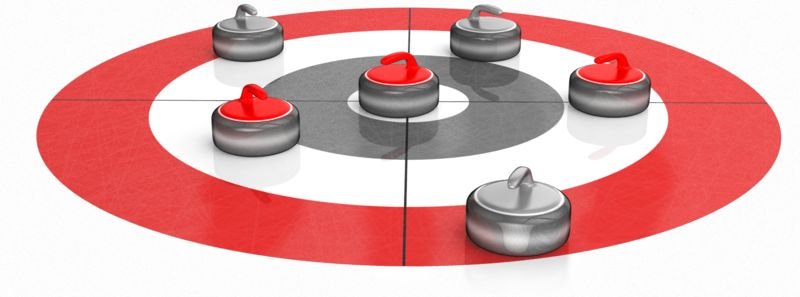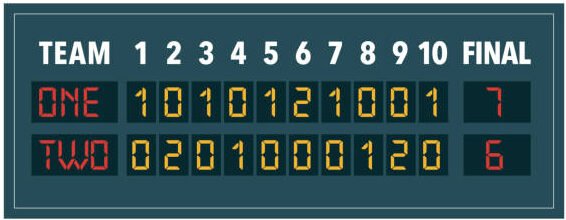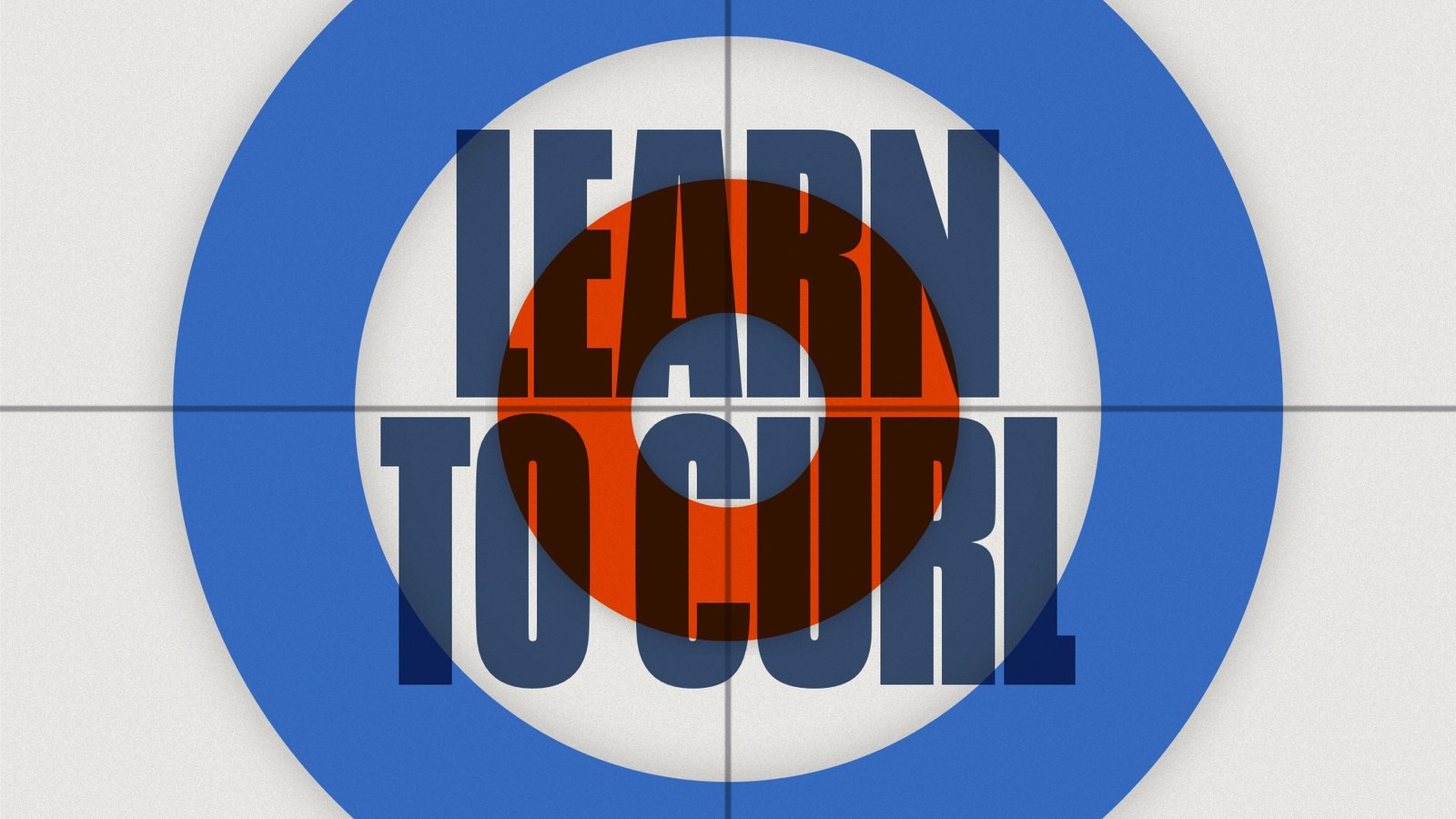Scoring in curling is determined after both teams have thrown all of their stones. In each end, only one team can score points no matter how many stones are in the house. For a stone to be eligible to score, it only has to be slightly overlapping the house, and doesn’t have to be fully inside the lines. A common misconception is that the coloured rings in the house are each worth different amounts of points. However this is incorrect, and scoring is determined based on which team has the stone closest to the “button”, the centre of the target.

Only the team that is closest to the middle of the rings after all the stones in an end are thrown can score. The number of points they will score is closely linked to the position of the other team’s best stone. Basically, the number of points the scoring team get is equal to how many stones they have that are closer to the button than the other team’s best stone. Here are some examples to show how this works in a variety of situations:

In curling, the score must be agreed by both teams before clearing away the stones and beginning the next end. While most of the time this is an obvious formality, there are many occasions where mere millimetres will be separating the stones and it may take more than a keen eye to make the right decision. While there are umpires in curling, they only get involved as a last resort, and scoring is usually discussed and agreed by the Vice-Skip on each team. If necessary, they may call for a “measure” if they are unsure of which stone is closest, and a measuring device will be used to reveal the answer.
It might seem strange, but sometimes in curling it can be good when the opposition scores a point! This is because of something called the “hammer” which strongly influences strategy. The “hammer” is the final shot of the end, and having this is considered to be an advantage. However, the team that scores must give the hammer to the opposing team for the following end. This means that forcing the other team to score one point will ensure you get the hammer for the next end, where you should aim to try and score two or more points. Following this pattern can be the key to a very successful curling career…give up one, score 2 with the hammer, give up one, score 2 with the hammer! For more on this, please visit the “strategy” section of our Learn To Curl glossary.
However, if an end finishes with no stones in the house, it is considered a “blank end”, neither team score, and the team with the hammer retain the last shot advantage for the next end.

As the game goes on, one player per team is responsible for updating the scoreboard so that the players and any audience know what has been agreed. Again, this is often the Vice-Skip on each team. There are two different types of scoreboards that are used in curling. The one shown above is what you have probably seen on television, but will most likely be different from your local curling rink. To learn more about each type, check out our “scoreboards” page.
For more on curling terminology, visit our glossary page!
Hopefully you might like to come and give curling a try.
For a one-off session, visit our Try Curling page to book a two hour session for yourself, or bring friends and family.
Alternatively, you could book a place on one of our Learn To Curl courses which run over a series of 4 weekly two hour sessions.


